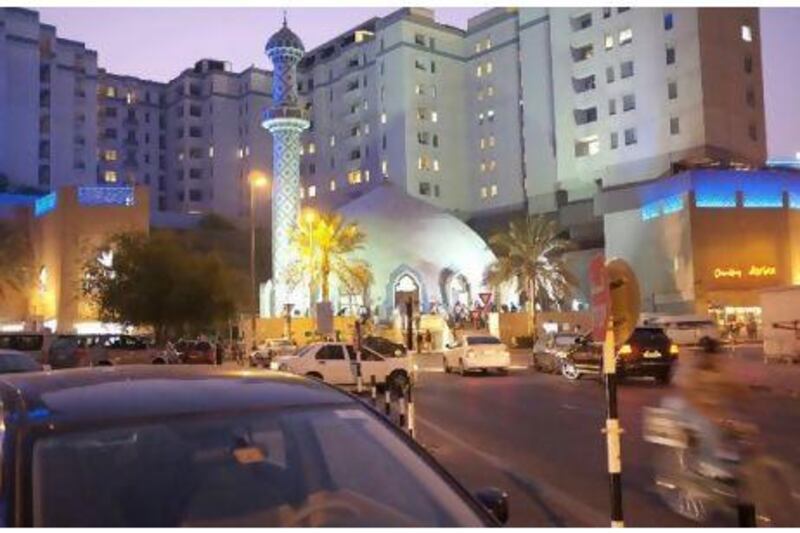DUBAI // With its striking shape nestled in one of Dubai's busiest districts, the Bin Haider Mosque in Deira has for years been a beacon of Islamic architecture in the old city.
Established in 1952 by the late Omar Ali bin Haider, the mosque is one of the city's oldest buildings.
Mr bin Haider's son Mohammed Omar, the chairman of Mohammed Omar Bin Haider Group, refurbished the house of worship in 1985, preserving its unique shape and symbolic design.
"I have been coming to this mosque since I was a child," said Wael Najaro, 36, a Dubai-based Sudanese businessman. "In the late 80s I often came to Dubai from Abu Dhabi with my parents to shop at Al Ghurair Centre, and we always prayed our Friday prayers in the Bin Haider mosque, partly for convenience and partly due to our awe of the design and shape."
Unlike most mosques, it is entirely enclosed in a gently pinched dome, which covers a 465-square-metre, circular prayer hall. Inside, the acoustics are such that a whisper on one side can be heard on the other. Above, a single chandelier hangs from the centre, surrounded by Quranic verses written in turquoise and gold.
Video: Ramadan remembered
People recall the holy month of Ramadan as it was in the 1970s
A single blue-tiled minaret stands outside.
The central prayer hall is simple and elegant, illuminated during the day by light from six windows.
The mosque, which is in central Deira, also provides shelter for many labourers who work under the scathing summer sun, but sleep or rest inside. Four giant air conditioners blast through the domed structure.
The mosque has two levels. The lower level can hold up to 450 worshippers, while the top level can hold 400. There is room for a further 150 worshippers in its outer courtyards.
"During Friday prayers and Eid prayers, we reach full capacity of 1,000 people," said Mohammed El Saeed El Najjar, the imam.
The mosque is adjacent to Al Ghurair Centre on a byway of Al Rigga Street. Over the years, many buildings, hotels and restaurants have risen up around it, while the mosque remains unchanged.
"Two years ago, I had a worshipper who approached me, telling me how impressed he was with the design," Imam El Najjar said.
"The man took pictures and said that he wanted to build one just like it in Turkey. After speaking to him, I found out he was a senior member of the Turkish parliament," he said.
The imam, who has been serving at the mosque since 2003, said a positive sense of community had always been present there.
"We have a great community interaction with the activities held by the mosque. Scholars lecture all year round, and lectures for new converts are popular," he said.
Many people have decided to convert to Islam at the mosque.
"We have had between 40 and 50 converts in the past eight years who have chosen the Bin Haider mosque to be where they recite the Shahada," Imam El Najjar said.
The Shahada is the declaration of Islam that states one knows and believes without suspicion in the oneness of God (Tawhid) and the acceptance of the Prophet Mohammed as God's messenger.
"Our last convert was about 18 months ago," he said.
The imam, a 42-year-old father of three, said most converts also attended classes at the mosque, which are held every Monday.
[ amustafa@thenational.ae ]






